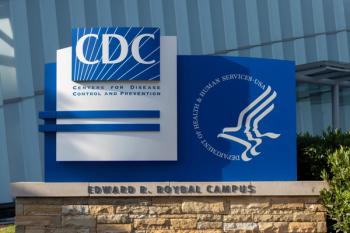
Tremelimumab–Durvalumab Combo Extends Survival and Improves Cost-Effectiveness Over Sorafenib in Unresectable HCC
Key Takeaways
- Hepatocellular carcinoma often necessitates pharmacotherapy due to late diagnosis, with sorafenib as the standard treatment.
- Tremelimumab and durvalumab combination therapy showed improved survival rates compared to sorafenib monotherapy.
Combination therapy with tremelimumab and durvalumab significantly improves survival in patients with liver cancer compared with standard sorafenib treatment.
Eight in 10 patients with liver cancer have hepatocellular carcinoma, which is frequently diagnosed too late for surgical removal, necessitating pharmacotherapy. Sorafenib monotherapy is considered standard of care, but a combination approach with tremelimumab plus durvalumab has shown significant efficacy. Tremelimumab blocks PD-L1, as does durvalumab. Therefore, the combination works better than monotherapy.1
A team of investigators from China addressed this question with study findings published in BMJ Open, utilizing survival data from participants in the HIMALAYA study.1 In that study, researchers administered 300 mg of tremelimumab once and 1500 mg of durvalumab every 28 days to one group, whereas the other group received sorafenib 400 mg twice daily. The first group had 393 participants, while the second had 389 participants. After 4 years, 25% of the combination therapy group were still alive, compared with 10% in the sorafenib group.2
The combination treatment arm gave one-half quality-adjusted life year (QALY) more than the monotherapy group, at a cost of $9812.1 A QALY is a calculation based on the idea that longevity is one component of health. Another component is being free of illness, as measured by many variables, including a lack of symptoms like fever and overweight. A year of one’s life without illness is 1 QALY, and one-third of a year lived in perfect health is 0.3 QALY.3
Insurance companies use multiple variables to approve or deny medication coverage, and one variable is how much of a QALY a medication gives to a patient.3
In the study, 40.7% of patients in the combination group required more chemotherapy. In contrast, 45% of the monotherapy group required a different chemotherapy treatment. This relates to another metric insurance companies use: incremental cost-effectiveness ratio (ICER). If the ICER is under $150,000, insurance companies are more likely to cover the treatment. In this case, the combination treatment cost $19,239.1,3
After taking all of these factors into account, the investigators concluded that the combination therapy approach resulted in lower costs as well as better survival outcomes, and the cost was well within most insurance companies’ willingness to cover.1
Moving forward, researchers hope to investigate a different combination therapy (atezolizumab-bevacizumab). Chinese researchers cited a study done in America and parts of Asia that showed that patients with hepatitis B, hepatitis C, and low alpha fetoprotein had better success rates with sorafenib, raising further questions about the most efficacious treatment.4
REFERENCES
Cheng S, Li B, Tang L, Liu S, Xiao J. Tremelimumab plus durvalumab versus sorafenib in first-line treatment of unresectable hepatocellular carcinoma: a cost-effectiveness analysis from the US payer perspective. BMJ Open. 2025;15(4):e090992. doi:10.1136/bmjopen-2024-090992
Sangro B, Chan SL, Kelley RK, et al. Four-year overall survival update from the phase III HIMALAYA study of tremelimumab plus durvalumab in unresectable hepatocellular carcinoma. Ann Oncol. 2024;35(5):448-457. doi:10.1016/j.annonc.2024.02.005
Prieto L, Sacristán JA. Problems and solutions in calculating quality-adjusted life years (QALYs). Health Qual Life Outcomes. 2003;1:80. doi:10.1186/1477-7525-1-80
Su D, Wu B, Shi L. Cost-effectiveness of atezolizumab plus bevacizumab vs sorafenib as first-line treatment of unresectable hepatocellular carcinoma. JAMA Netw Open. 2021;4(2):e210037. doi:10.1001/jamanetworkopen.2021.0037
Newsletter
Stay informed on drug updates, treatment guidelines, and pharmacy practice trends—subscribe to Pharmacy Times for weekly clinical insights.




















































































































































































































